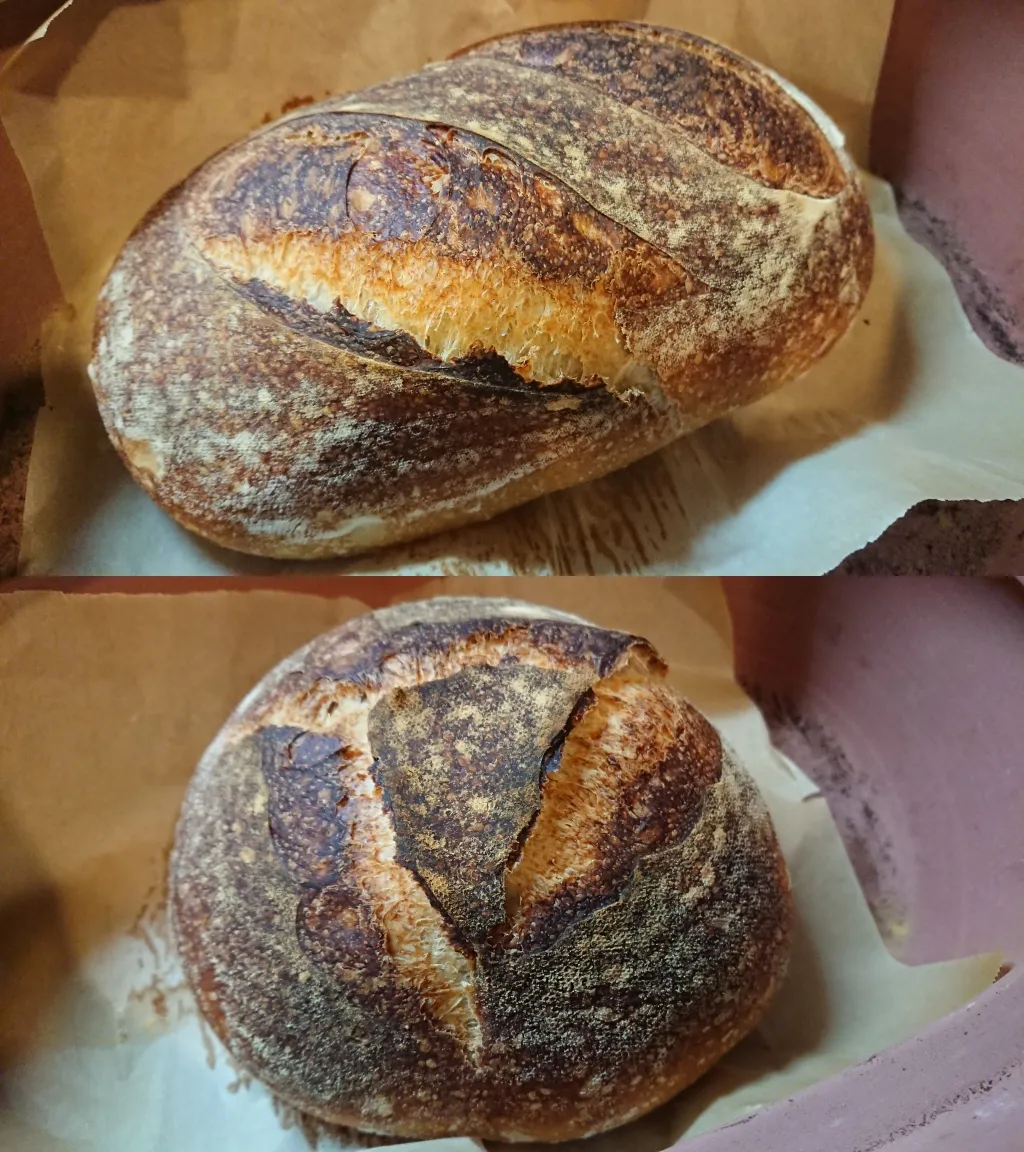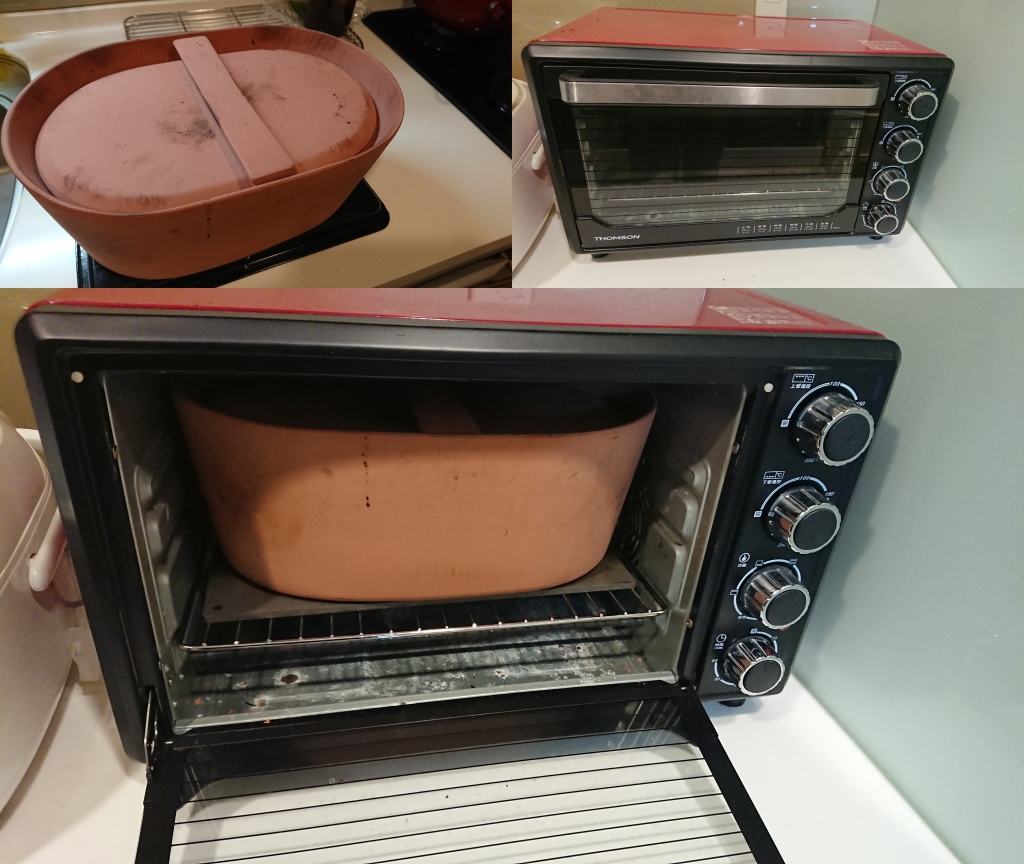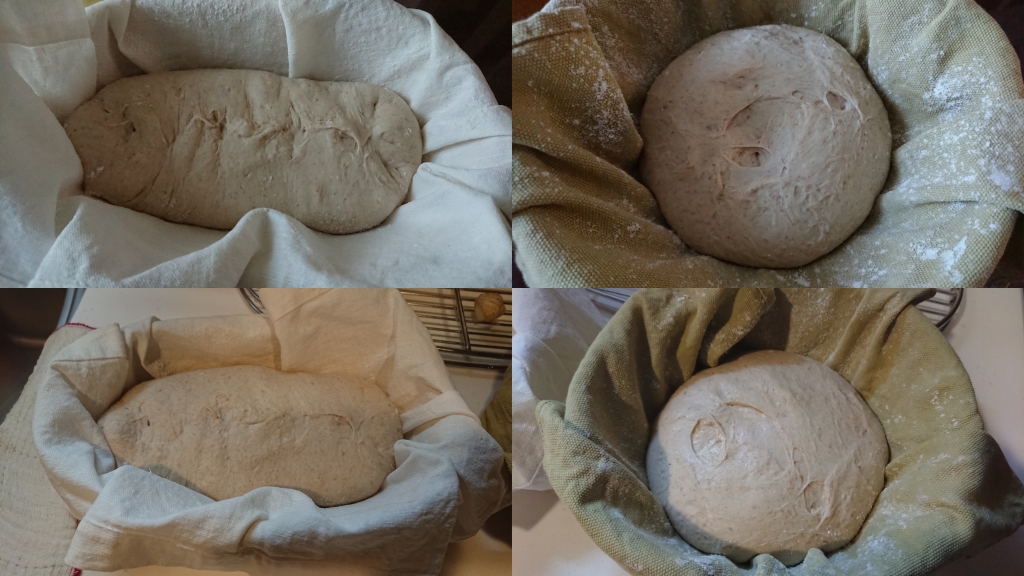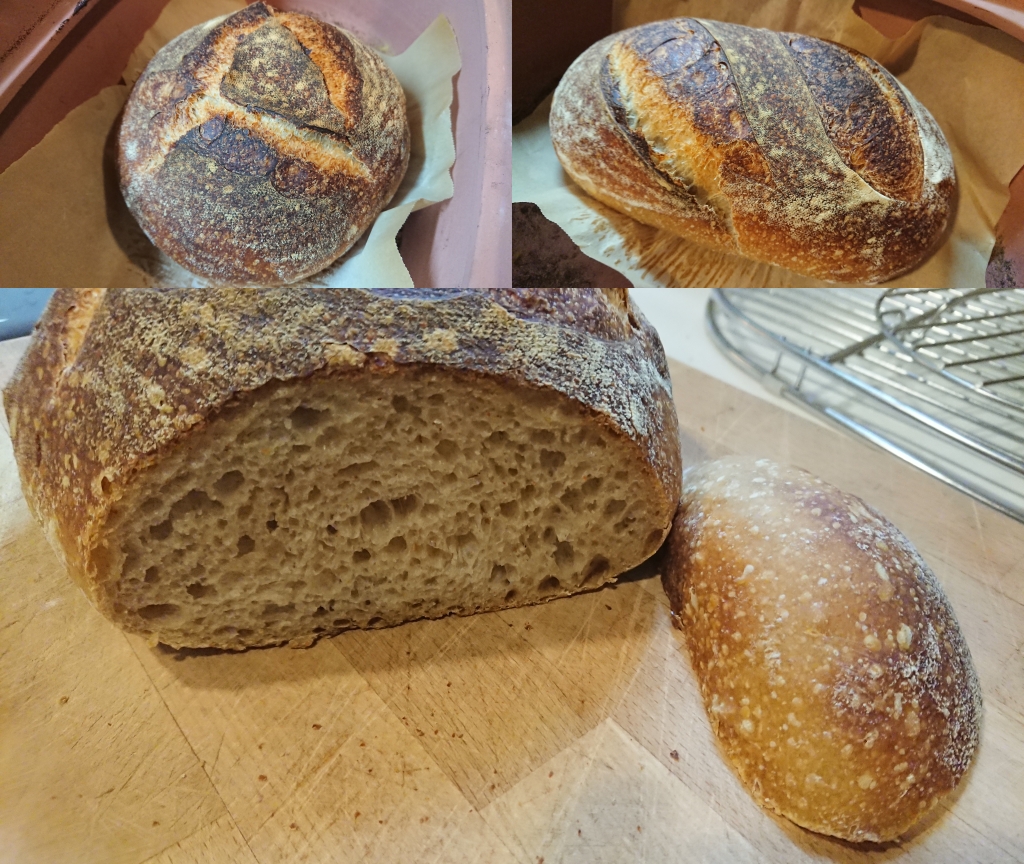
TFLers,
I just wanted to give an update on the experiment that I have been doing about cold start baking, i.e., no oven preheating. The first part of my experiment can be found at:
http://www.thefreshloaf.com/node/54611/no-oven-preheating
Conditions:
The recipe for the loaves is the same as the one in part I (above link). I have fed my starter @ 100% hydration in the morning, and let it mature for about 10 hours on the counter at 18C/64F room temperature. Mixed all ingredients at night, applied 2 stretches and folds, and let it bulk ferment over night for 9 hours on the counter. Shaped one batard and one boule in the morning and shoved them into the fridge. The temperature in my fridge is 7.5C/46F which I think is a bit on the colder side, and that I guess has prevented me from getting good oven spring when I bake the loaves on a preheated oven and pot. That is the reason why I was trying to investigate whether a "cold start" would give better results.
Equipment:
I use very simple equipment as shown below. It is a mini oven with heat control elements on top and bottom and a clay pot from IKEA. It is quite beaten up too, and yes it needs some cleaning.

Proofing:
Both loaves proofed in the fridge for about 12 hours and were ready to bake at night. Below is a picture of both loaves before and after proofing. Even though the loaves were in the cold fridge, proofing actually happened.

Baking:
I took both loaves out of the fridge and loaded the batard into the baking pot and started baking without preheating the oven. Set the temperature knobs to 220C/428F (never calibrated the oven temperature) and baked for 45 min with lid on and another 10 min with lid off.
For the boule, I actually wanted to add another detail to the baking. Since I was not sure whether baking straight out of fridge would be successful, I let the boule rest on the counter for 1 hour and 30 minutes, and then loaded it into the baking pot. Anyway, both pot and oven were cool again, so the second baking was technically without preheating the oven -- "cold start".
Results:
In general, the results were quite impressive as seen below. I am surprised with the oven spring, the softness of the crumb and the crust crunchiness. The No-oven-preheating approach gave me much better results when baking the loaves straight out of the fridge. I believe the internal temperature of my fridge is a bit cold, so I always had to rest the loaf on the counter and let it warm a bit before popping it into a preheated oven and pot. I am glad that I have followed my mom's method and improved the results.

I gave the batard loaf to my neighbor, so no crumb shot.
And thank you for the experiment! I need to try this one day since preheating the oven is such a pain.
About your fridge, 46F is in the danger zone for food getting spoiled. It isn’t cold; it’s actually on the warm side. It is recommended to keep the fridge at 40F or below. You might want to check on that.
Thanks for the notice on the temperature. I will measure it again with another thermometer just to confirm.
Your loaves tend to be underproofed when you load them into the oven?
I am not an expert on proofing and I have missed many bakes due to over proofed loaves. The picture does not show a big increase in volume during the cold retard, so yes we could say it was on the under proofed side. I think that might be ok because the oven starts cold. What would you say?
They are beautiful loaves and I have to try this. Merry Christmas. Patsy
I'd give it three thumbs up, if I had that many!
"Even though the loaves were in the cold fridge, proofing actually happened". A note about retarding dough and continued rise: Just because it enters the refrigerator doesn't mean that yeast activity ceases immediately. The larger the object, dough in this case, the longer it will take to bring down to refrigerator temperature. Until the dough gets to about 40dF throughout the mass, the yeast will continue to work. Consider that a 20 lb. turkey will take a lot longer to cool down than a single chicken leg.
LOL!
Thanks Alfonso!
Agree, these loaves got some thermal mass and according to Danni my fridge is running warmer than normal (46F), so it kept activity all along.
Anyway, I think I will start doing more retarding since the flavor was quite nice.
I've seen comments (somewhere) that it is near to impossible to steam in a gas oven due to constant venting. Can anyone enlighten me?
Thanks
Tom
So Tom, the only solution would be dutch oven or enclosed pot?
Thanks for posting your findings.
it was nice of you to take the time to document your test. Both this thread and the original threads are very helpful. I have it book marked and plan to try cold pot/cold oven soon.
I also like the fact that it conserves electricity. This is a win, win.
Your breads are gorgeous!
Thanks
Dan
Thanks Dan for the compliments!
I learn ALL the time from this community, so it is good to provide a bit of information back. Agree, it can potentially save some energy overall. Good point!
Peter
Beautiful loaves! What was the weight of the loaves? Trying to gauge bake time as 55 min at 428 degrees is a long bake depending on weight. The color, crumb and rise are impressive to say the least. THANK YOU , for your experiment and Post.
Thanks Trailrunner!
The total flour per loaf was about 331 g (70% hydration), so they were small. Comparing the baking time if I preheat the oven, I think I need shorter than what is reported by other TFLERs. If I preheat the oven/pot to 250C (480F) and drop it to 428F after loading the load, I typically need to bake for 25 min lid on + 10 min lid off for a loaf with up to 450 g total flour.
i don’t usually think in terms of flour weight... just total weight of loaves. But if I just think of flour weight then my typical loaves are 333 flour/ 750 or so total weight each with water and levain included. I preheat 500 degrees pots bake 15 lid on at 500 and 25 lid off at 450. Sometimes I lower to 475 immediately for the 15 lid on then lower to 450 degrees and bake 25 lid off. My loaves are always 205 or so with this routine. i am using a new to me oven that isn‘t a fancy high tech brand. My loaves aren’t browning like they were the past 10 yrs with the fancy oven using the above times and temps but they are done to the same internal temp. Will just play around a few bakes and see what I get. Thank you. After 40 yrs of baking breads I am always willing to try New things . Will report back after the holidays when I get home. c
seems to work for me when using a cold start. Some Clay pots need to be soaked in water and then go in cold or they might break. That is what my Romertopft instructions say any rate. Your loaves show how nice it is to bake this way.
Well done and happy baking
Thanks DB for the compliments!
When I bought my first clay pot, I followed the instructions and soaked it, but the result on the crust was not good. I think it was too soggy because the pot produced too much steam over a longer period then needed (I preheated it prior to loading the loaf, but the walls were still wet producing lots of steam when I loaded the loaf). Probably, I should have taken the lid off much earlier in the bake. So from that day on, I have been baking without soaking it. And yes, I have cracked the first one because loading cold dough in a super hot pot does not work well as we know. LOL
Could you share a bit of your experience using a clay pot that is soaked prior to going into the oven?
Lodge CI Combo Cooker. My Chinese sand clay pot said to soak it for 24 hours and then it could go directly in the heat or directly on the fire. It has a steam hole in the lid that you need to plug for bread baking to keep the steam in and used a cut off short hop stick end for that. The Romertopft I got at Goodwill for a buck actually came with the original directions that said to soak for few minutes and then put it in a cold oven to keep it from cracking so that is what I do when I use it for baking bread. I make more chicken in it now a days though.
Many Fresh Lofians over the years have done experiments with cold oven starts. If you type in cold oven start into the search box you will find many of them along with posts on cold something like : weather, storage, dough, starter, room temp, rice, cold cuts, fridge, ferment, sourdough, bulk, biga, poolish, kitchen and who knows what else has been cold around here but the search function is not the best. One I remember from about 7 or 8 years years ago, was the one done by David Snyder that I tried to emulate a couple of years later. But, there have many who did experiments to prove to themselves what is better hot or cold start.
My own conclusion is that there isn't really much difference if you add time to the cold start process. before taking iof the lid to make sure the bread has had time to spring under steam Many folks who have a hard time with hot pots and burning themselves start with cold pots going into hot or cold ovens and get great results.
I use the search function a lot on this site. It seems a gazillion bakers have tried just about everything you can do with bread and posted their results here. Not long ago a Philipino Baker, Job, who bakes bread over an open fire routinely using a clay pot, posted a bread challenge for Fresh Lofians to try and do it too. it was one of my favorite bread challenges to date and made an exceptional loaf of bread to boot! I was amazed even though the bottom was a bit dark. I tore down oart of my brick Rocket Stove in the back yard to make the open fire oven here
Temporary WF Brick Oven for Open Fire / No Oven Bread Challenge
and here was the resulting bread bake
No Oven Challenge Bake - 123 Sourdough 5 Grain
The smoky flavor of this bread and the crust was to die for.
Here is another post on clay bakers
clay bakers
Happy baking
Thanks for the comments DB and happy Holidays.
Don't change what you are doing.
Dear Stuart, it is the old adage, the more I learn the less I know!
Thanks,
Peter